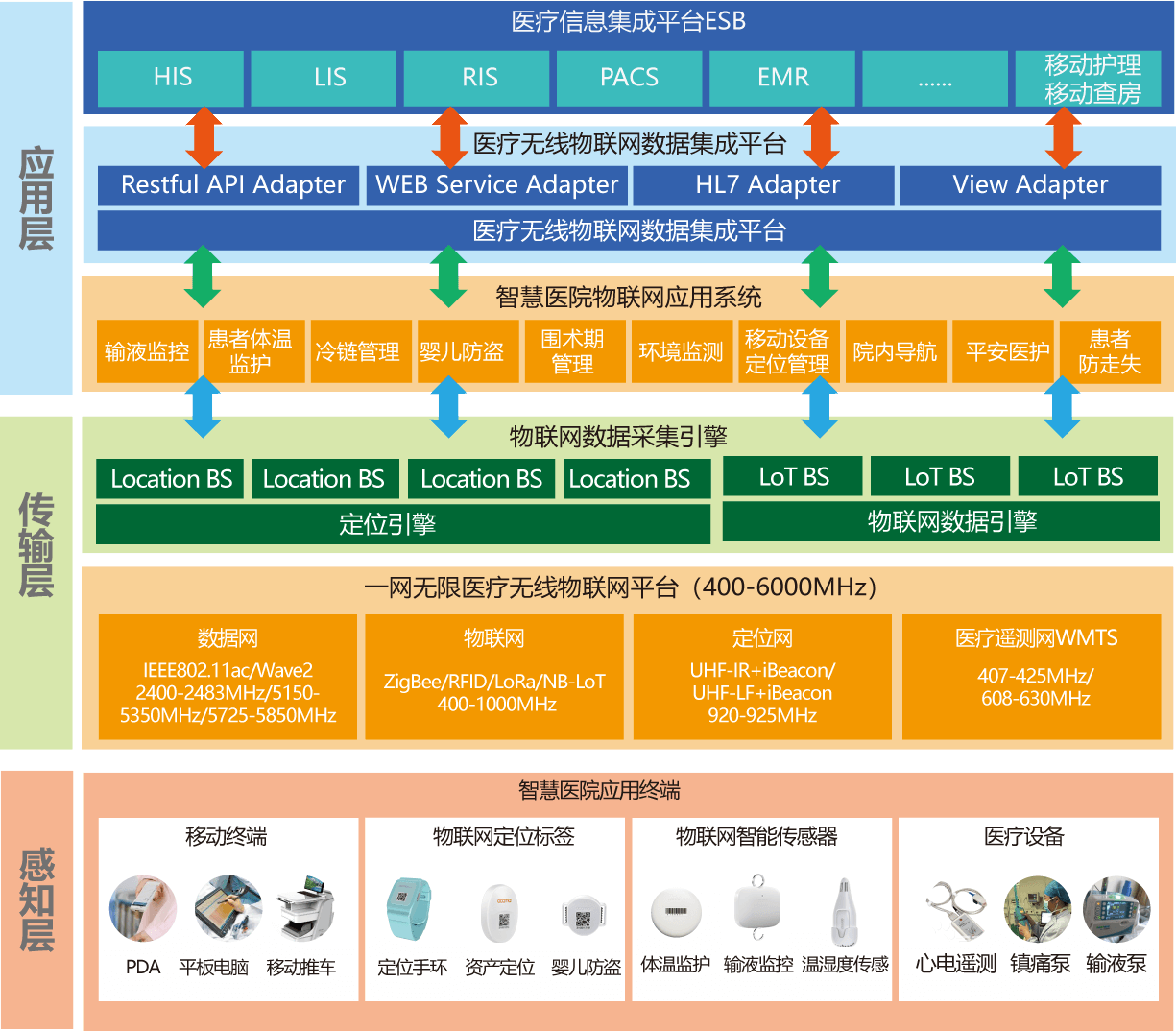Medical IoT
Background of the plan
The construction of a medical IoT platform mainly starts from three directions, namely providing a unified and shareable transport layer channel; Provide a centralized IoT data engine to report data to various intelligent sensors and unify data distribution caliber; Provide an IoT integration platform to reduce the complexity of docking with hospital information integration platforms or business systems by structuring and standardizing real-time data from various IoT application systems.
Through a unified and highly integrated IoT platform, various application functions can be presented, used, and managed on the same platform. At the same time, establish IoT applications that meet the specific needs of various departments in the hospital, and each application system effectively plays its role, changing and optimizing the original work mode, improving its work efficiency and quality. It can also share and interconnect data with various existing information systems in the hospital, without forming information islands within the hospital.

Product advantages
The medical Internet of Things has the characteristics of small data transmission volume, long data transmission interval, and a large number of RFID sensors. The Internet of Things has high requirements for tag power consumption, which determine that it is not suitable for shared wireless data networks (WiFi networks). The medical Internet of Things operates in frequency bands such as 400-960MHz and 2.4GHz, including ZigBee, NB IoT, LoRa, BLE, and a large number of private protocols. Related applications include wireless cold chain management, wireless infusion monitoring, and infant anti-theft.
The Ocamar OneNet Unlimited® medical dedicated wireless IoT platform Internet of Things platform is a medical dedicated multi-service integration platform based on the ultra wideband MIMO indoor signal distribution system (WIDS) independently developed by Onco with fully independent intellectual property rights. A set of ultra wideband WIDS MIMO indoor signal distribution system can simultaneously meet various medical wireless applications, from WLAN wireless data network to WMTS medical telemetry, from medical positioning network to medical IoT, while supporting multiple RF frequencies, from UHF frequency band to 5.8GHz, and supporting N wireless communication protocols, including WiFi6, ZigBee, LoRa, LTE Cat1, NB IoT, BLE, GFSK, RFID, WMTS, and operator 5G. Hospitals can install a dedicated wireless IoT platform for Ongke Medical, connecting to N wireless network application systems, thereby avoiding duplicate construction, simplifying the wireless network system architecture, and reducing overall ownership and maintenance costs.
The wireless signal processing system is composed of precision passive microwave devices, and its main function is to connect to an infinite network ® Sort out the signals of each subsystem of the platform to ensure signal quality and avoid signal interference between subsystems. The ultra wideband indoor signal distribution system is customized according to the specific structure and application requirements of the target coverage area. The ultra wideband antennas are laid in all areas that need signal coverage. These ultra wideband antennas are connected into an antenna matrix through ultra wideband lines to seamlessly cover the target area from edge to edge, ensuring that all wireless signals between 400MHz and 6GHz can smoothly reach every corner that needs to be covered.
Product architecture




